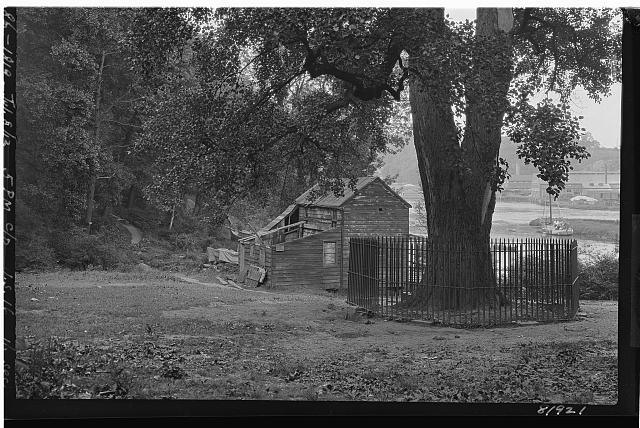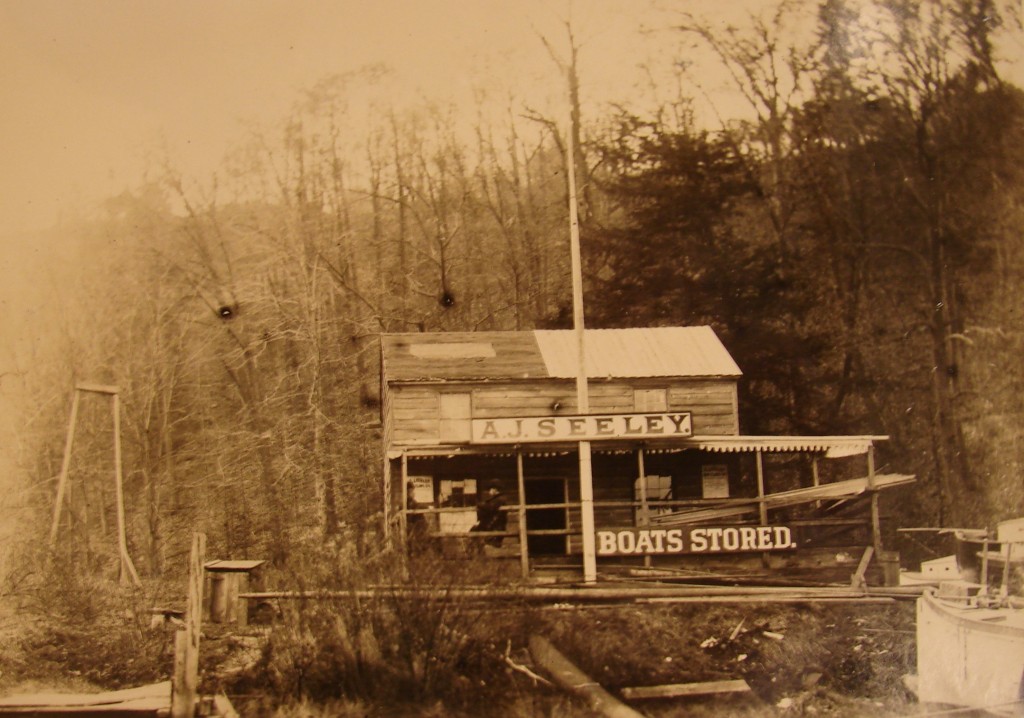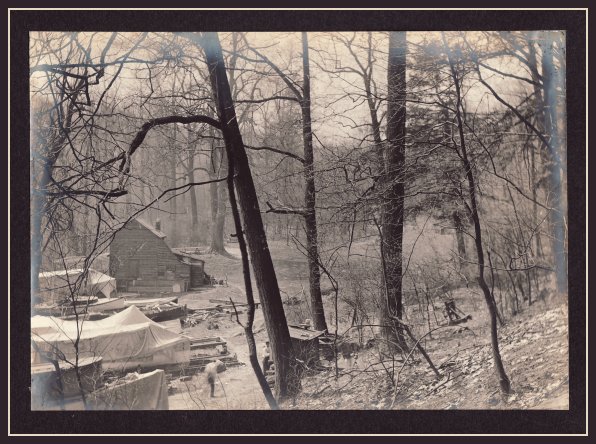"Pop' Seeley's cabin at the foot of Cold Spring Road in 1893 photograph by Ed Wenzel. (Source: New York Historical Society)
Sometime before the turn of the twentieth century, on the northernmost tip of Manhattan, a folksy, business savvy and somewhat mischievous fellow named “Pop” Seeley set up shop in a quaint little cabin in the shade of a mighty
tulip tree on the shores of a then meandering and muddy creek called the Spuyten Duyvil.
Today the location of the tulip tree, allegedly the spot where Peter Minuit swapped the island of Manhattan for a handful of trinkets, is marked by a boulder with a plaque proclaiming: “According to legend, on this site of the principal Manhattan Indian Village (Shorakkopoh), Peter Minuit in 1626 purchased Manhattan Island for trinkets and bead then worth about 60 guilders. This boulder also marks the spot where a tulip tree (Liriodendron Tulipera) grew to a height of 165 feet. It was, until its death in 1938 at the age of 280 years, the last living link between the Reckgawawanc Indians who lived here.”
Seeley cabin in 1906 photo.
A stone’s throw west of the tulip would have been Seeley’s cabin…
Former resident Aimee Voorhees, who would later construct a
pottery works a short distance from the Seeley cottage, described “Pop’s” home as a “
small white frame house more than a century old. It was built for a retired sea captain seeking a snug harbor. We have never been able to find but his name…but Pop Seeley told us stories about him. Pop lived here until he died.” (Helen Worden, Round Manhattan’s Rim)
Inwood Hill Park, as we know it today, wasn’t even a spark of an idea when “Pop” Seeley moved into the peaceful cove now buried under a soccer field made up of landfill from later subway digs—at the time, Inwood Hill was referred to locally as Cold Spring Mountain. (...)
 |
| Tulip tree in 1913 |
 |
| Seeley Cabin in 1904 photograph. |
 |
| Seeley Cabin in 1906 photo. (Note inset with Liebler Bottling Company sign.) |
Fuente: http://myinwood.net/pop-seeley-the-old-man-of-the-river/#more-9243









No hay comentarios:
Publicar un comentario